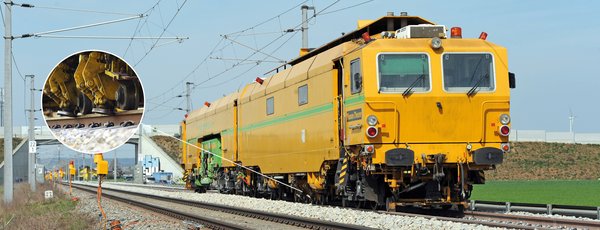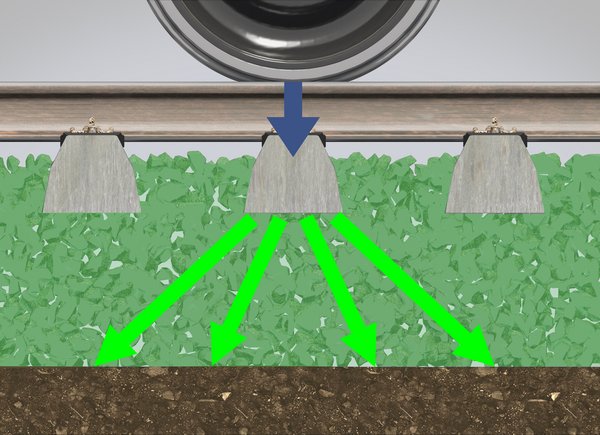Perfecting track maintenance
Dynamic stabilization has become indispensable to sustainable track maintenance. This is all the more important as traffic loads increase. Now, technological refinement brings further improvements for dynamic machines.
The ballast bed must be homogeneous and stable to fulfil its function: to distribute the dynamic forces produced by rail traffic into the formation, ensuring that the track geometry is maintained for as long as possible. The objective of dynamic track stabilization is to produce a homogenous ballast bed after the track has been maintained using a tamping machine.
What is so cost-efficient about dynamic track stabilization?
Raising the sleepers during track tamping reduces the track grid’s lateral resistance in the ballast bed. The dynamic stabilizer anticipates traffic loads in a controlled way, exerting rather low stresses on the ballast bed. The controlled settlement increases the track’s resistance to lateral displacement considerably.
As a result, there is no need to impose speed restrictions after tamping. The homogenisation of the ballast bed secures the track firmly in position. It ensures that the track geometry is more durable. In addition, the action limit is reached much later and intervals between maintenance are extended. Maintenance costs are reduced.
Dynamic track stabilization
Principle and effect
Using an imbalance, the DGS stabilizing unit produces horizontal vibrations crosswise to the track axis. The dynamic track stabilizer travels in continuous action on the track while the stabilizing unit transmits controlled minor vibrations to the track grid via pressing rollers. At the right vibration frequency (32 to 35 Hz) the ballast stones begin to move and re-arrange in a denser and homogeneous structure. At the same time, the unit applies a vertical load to the track. It increases the consolidation effect and allows for modifying the longitudinal level of the track.
The main parameters are:
- Vibration frequency
- Impact force
- Vertical load
- Working speed
For more information see Publication “Track ballast in Austria” by Christoph Kuttelwascher and Michael Zuzic.



